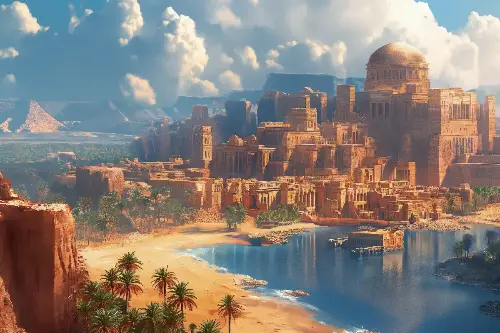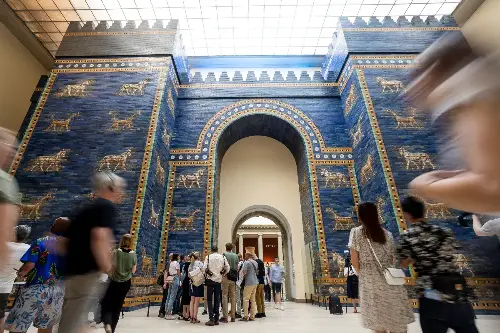Suspended between myth and history is the ancient city of Babylon, which once captured the world's imagination with stories of its splendour and might. Located on the fertile banks of the Euphrates River, in what is now modern-day Iraq, this city was the heart of Mesopotamian civilisation for centuries. The truth about Babylon is as compelling as the legends, painting a picture of human achievement and architectural marvels.

The Rise of a Civilisation
Considered one of the most significant cities in antiquity, Babylon’s origins date back to around 2300 BC when it was a small port town. The city rose to prominence under the rule of King Hammurabi in 1792 BC, who is famed for creating one of the world’s earliest sets of written laws. The city-state flourished, becoming a melting pot of cultures and a central hub of trade, science, and culture.
Architectural Wonders of the Ancient World
Babylon’s towering architecture reflected its status and power; none more so than the fabled Hanging Gardens, one of the Seven Wonders of the Ancient World. Although scholars still debate its existence, records describe a terraced garden with flora cascading from the sky. This ascendant paradise was said to be built by Nebuchadnezzar II for his homesick wife Amytis. The mastery needed to irrigate these gardens in the arid climate remains a testimony to the ingenuity of Babylonian engineers.
Besides the Gardens, the city was known for its grandiose walls and the impenetrable Ishtar Gate. These defences, tall enough to allow chariots to race atop them, awed ancient chroniclers. The Gate, dedicated to the goddess Ishtar, was a dazzling construction adorned with lapis lazuli-glazed bricks, showcasing the divine beasts of Babylon: lions, dragons, and bulls that symbolised the major deities.

The Cultural Melting Pot and Legacy
Babylon was a cultural nucleus, where scholars from all over the world converged to study astronomy, mathematics, and literature. The city’s scholars contributed significantly to our understanding of the heavens above, bequeathing us with a zodiac that continues to inform modern astrology, as well as a calendar system that divided the year into months and days. In literature, the city left behind the Epic of Gilgamesh, which is often heralded as the earliest surviving piece of literature.
Its language, Akkadian (later evolving into Babylonian and Assyrian dialects), became the lingua franca of the ancient Near East. Long after the city’s physical decline, this lingua franca ensured that Babylon's cultural and scientific contributions permeated throughout the region.
The Cyclic Rise and Fall
Babylon witnessed many rises and falls throughout history. Conquered by the Hittites, overtaken by the Assyrians, and revived by the Chaldeans, it always seemed to rise again. In 539 BC, however, the city met its irreversible decline when Cyrus the Great of Persia conquered it, leading to a gradual but persistent deterioration. Much of what was once magnificent became buried beneath the sands of time, awaiting rediscovery by archaeologists millennia later.

The Excavation and Preservation Efforts
In the 19th and 20th centuries, archaeologists from around the globe undertook extensive excavations in Babylon. The German Oriental Society’s expedition unearthed a significant part of the Ishtar Gate, transporting it to the Pergamon Museum in Berlin, where it can be admired today. But in their quest for knowledge, archaeologists faced a multitude of challenges. The delicate bricks of ancient structures bore the brunt of time and, in some cases, flawed restoration efforts added another layer of complexity to preservation.
Today, UNESCO has designated Babylon a World Heritage Site, and preservation has become the watchword. Efforts continue as Iraqis and the international community work to safeguard this site laden with human history for future generations.
The Timeless Resonance of Babylon
In the grand tapestry of history, Babylon's threads are woven with tales of human ambition, invention, and the undying yearning for immortality through great deeds and edifices. From echoes in the biblical Tower of Babel to its representation in popular culture, the lure of Babylon remains enduring, inviting and inspiring. Indeed, the legend of Babylon, nestled within the factual, reminds us of the transformative power of human creativity and the indelible mark it leaves upon the world.
